


Next: The Models
Up: Detection of Global Motions
Previous: Global motion patterns
Neurophysiological studies have found that MST receives strong projection from
the MT [46], [47],
[48], and most of the neurons in the dorsal part of the the
MST area (MSTd) respond selectively to different types of global optic flow
stimuli. Listed below are the major response properties found by several
neurophysiological studies ([49], [50],
[51], [52], [53]).
- MST receives strong projection from MT, and the receptive fields
(ranging from 10 to 100 degrees) of MSTd cells are much larger than
that of the MT cells;
- MSTd cells respond selectively to different types of motion stimuli,
(also called motion components): unidirectional planar motions
(translations), clockwise and counter-clockwise circular motions
(rotations), outward and inward radial motions (expansions and
contractions), and clockwise or counter-clockwise, inward or outward
circuloradial (spiral) motions. These optic flow patterns are
illustrated below:
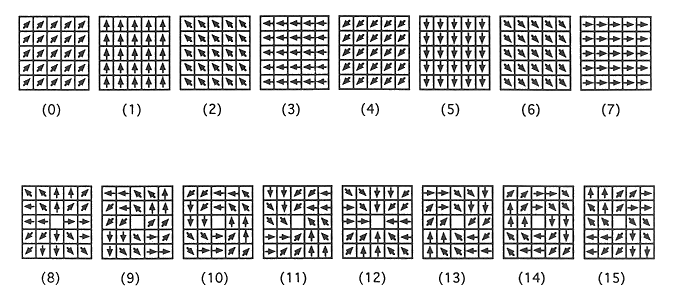
- There are three different types of MSTd neurons, called single, double
and triple-component cells, which respond to one, two, or three motion
components, respectively. The double-component cells can be planocircular,
planoradial or circuloradial (spiral cells). The three types of neurons
form a continuum of response characteristics. There are also neurons that
do not respond to any of the motion components.
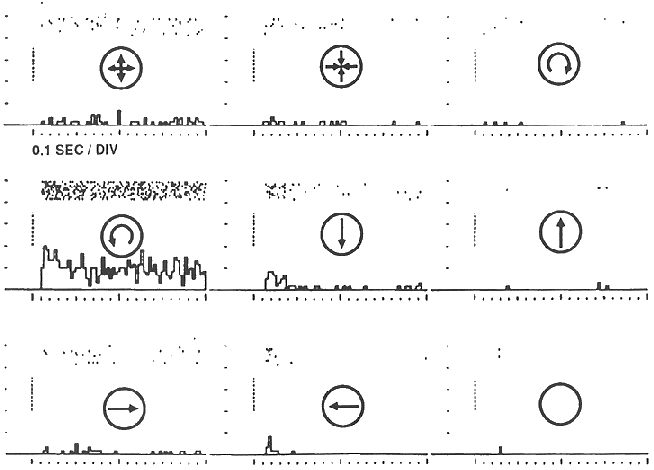
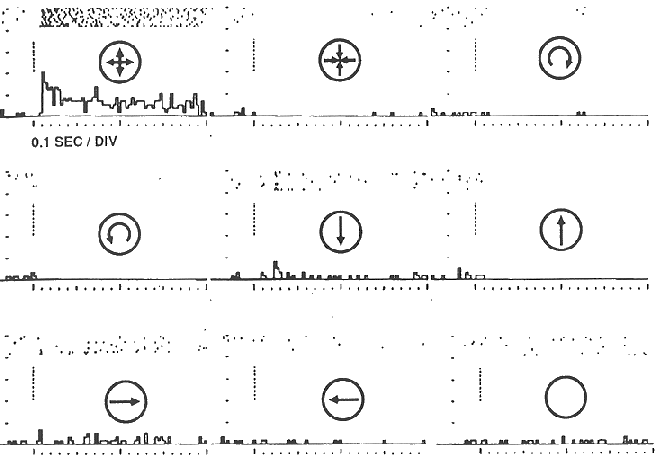
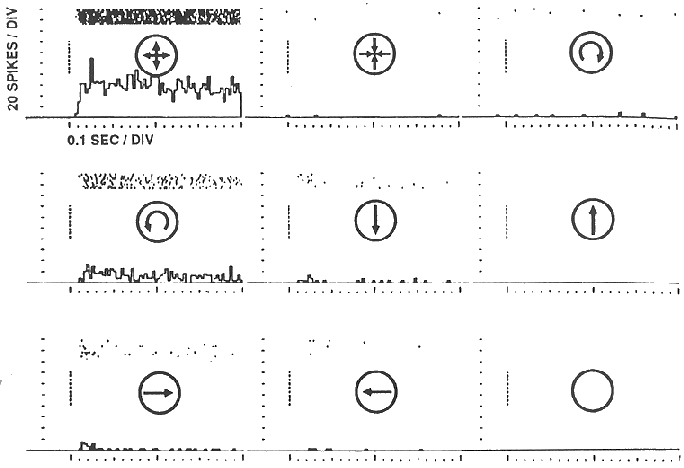
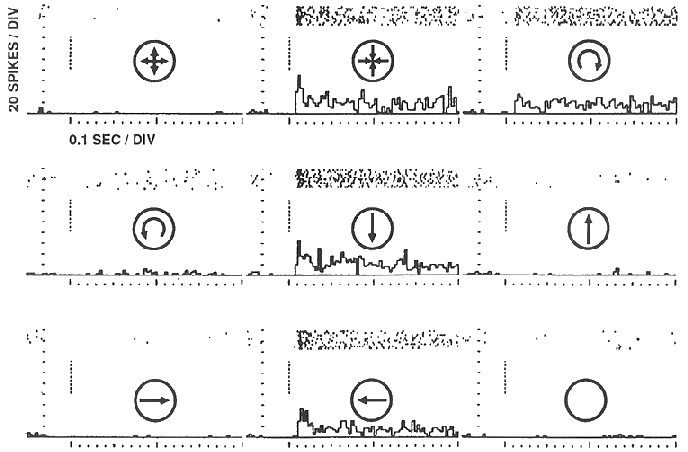
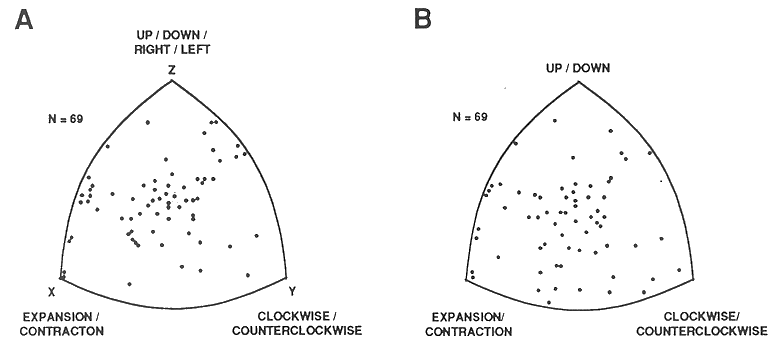
- Many MST cells show a sloping response profile (their responses are
stronger for certain stimulus locations than at others), indicating
that they are position dependent. Position independent response
selectivity is most prominent in single-component cells, while
position dependent response selectivity is most prominent in
multiple-component cells.
- MSTd neurons respond selectively to radial and circular motion patterns
with different locations of center of motion (COM). The distribution
of their preferred COMs covers all areas of the visual field. Some
neurons prefer COMs located in the central area of the visual field,
some prefer COMs in the peripheral area. The responses of
multi-component cells have different preferred areas in the receptive
field for different types of motions. These preferred areas usually do
not coincide.
- MSTd neurons responding most strongly to one of the 8 types of motions
listed in the periodical spectrum in the second row of figure above
also respond, though less strongly, to the neighboring motion patterns.
The responses of these MSTd neurons to the 8 types of motions form a
tuning curve which can be fitted with a Gaussian function.
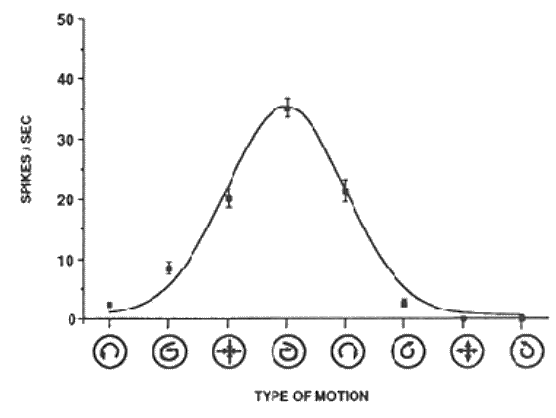



Next: The Models
Up: Detection of Global Motions
Previous: Global motion patterns
Ruye Wang
2000-04-25













